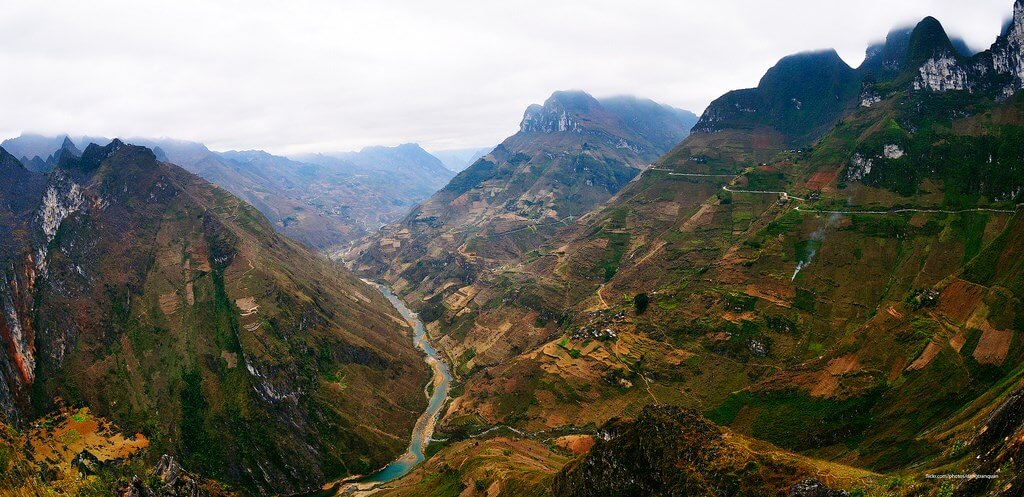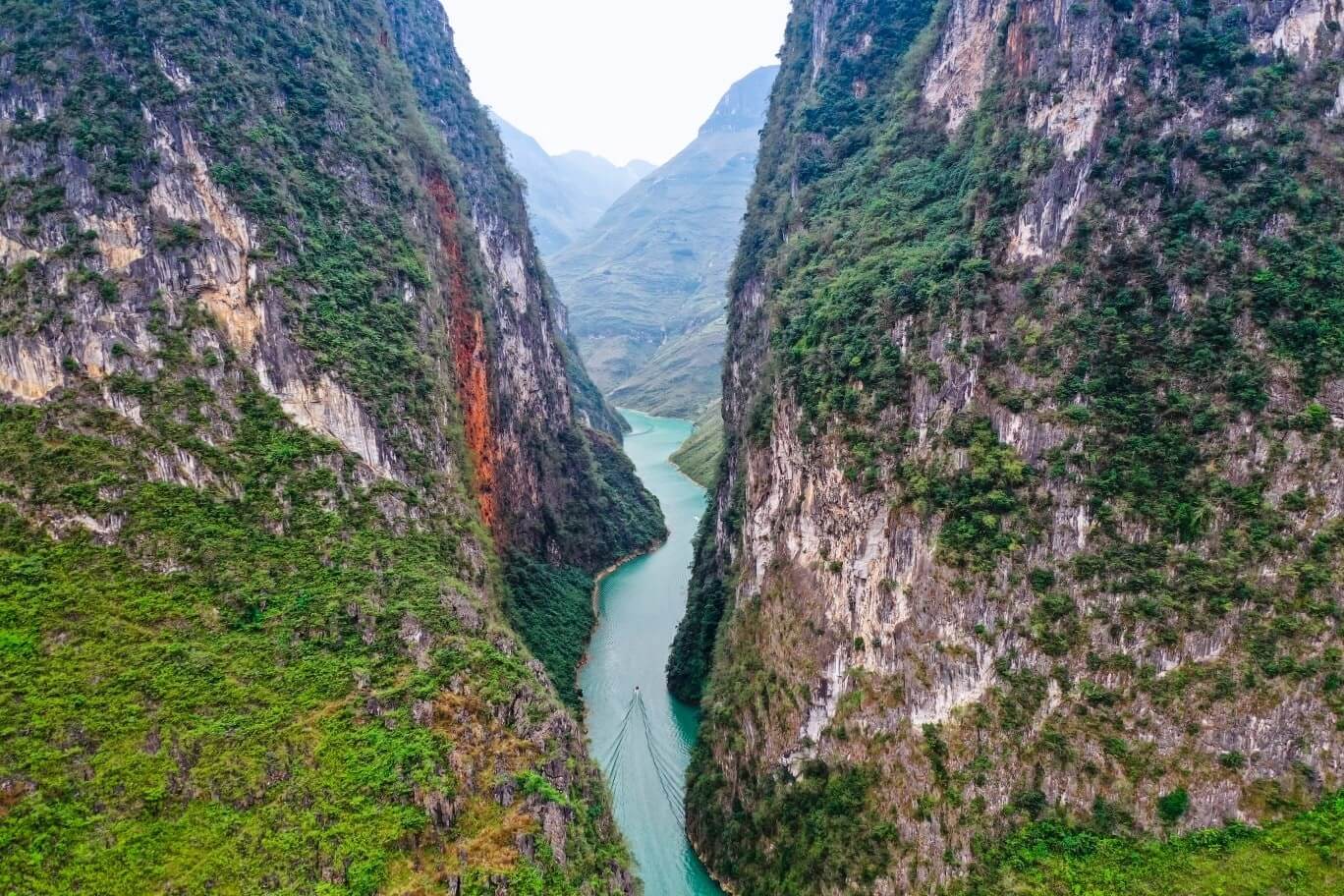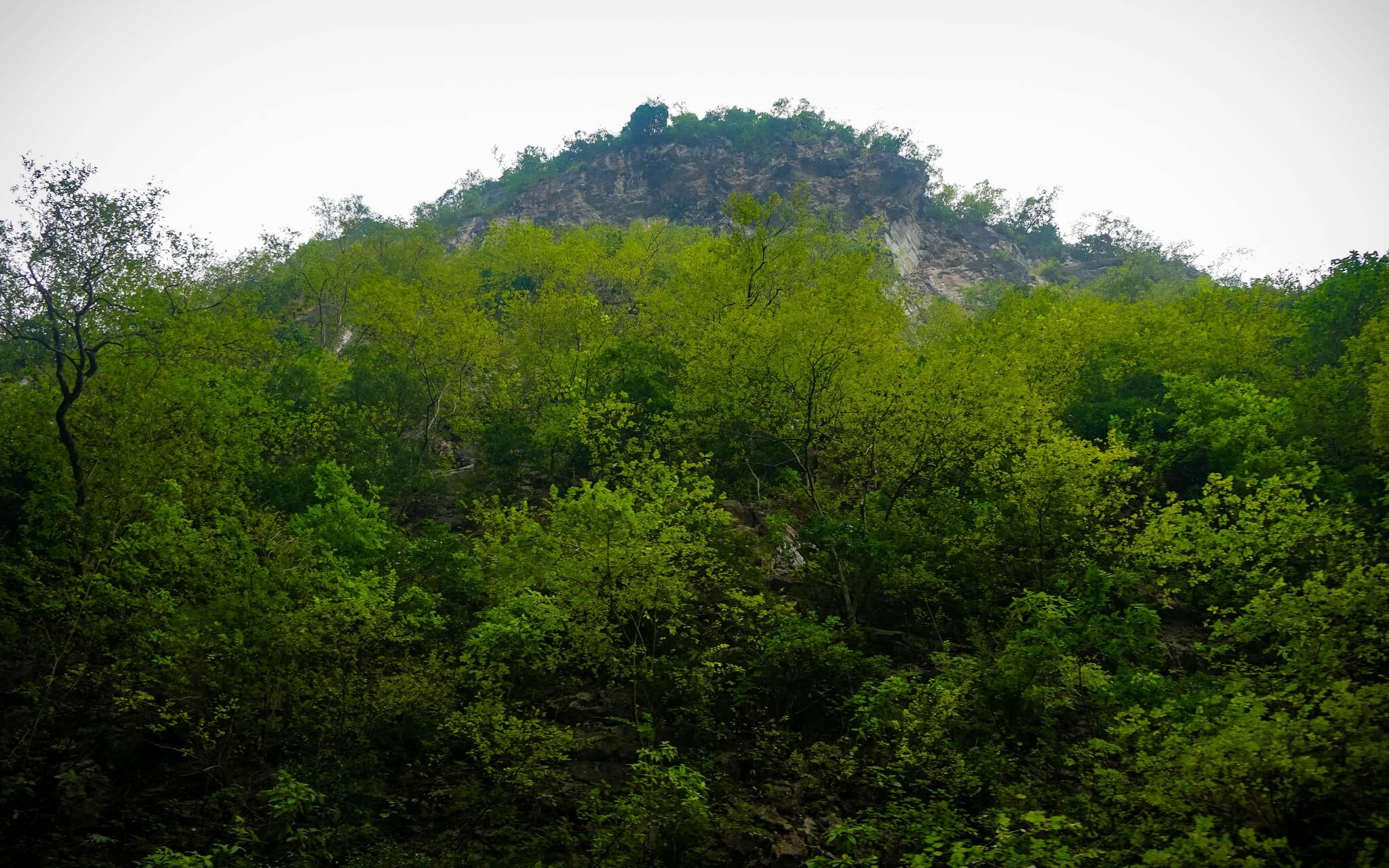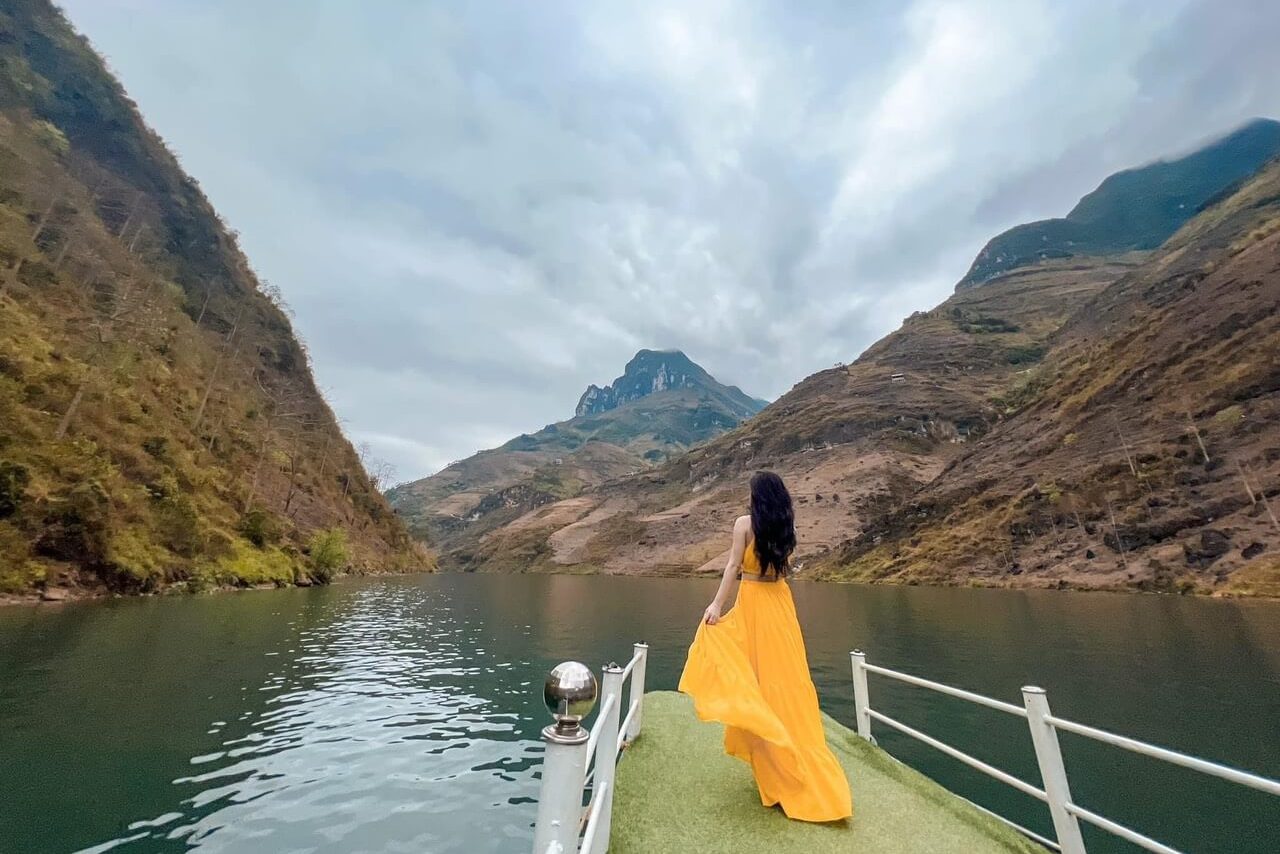Not only is nature blessed with the most beautiful and majestic landscapes in Vietnam, Ha Giang is also a golden destination for tourists who are passionate about exploring and experiencing culture with more than 19 ethnic groups living together. What is special is that each ethnic community in Ha Giang often chooses to live separately in separate villages with their own inherent characteristics. Let’s take a look at the Top villages that you should visit when traveling to Ha Giang.
One of the most impressive highlights when coming to Ha Giang is the scenic cluster of Nho Que River – Tu San Canyon. Together with Ma Pi Leng Pass, it has created one of the clusters of wonders representing the most majestic of Vietnam’s mountains and rivers.
Nho Que River
Nho Que River is a tributary of Gam River. Originating from China, when flowing into Vietnam, it creates a long border section in Lung Cu and Ma Le communes, then flows into Ha Giang province in Dong Van and Meo Vac districts, and finally joins Gam River in Bao Lam district, Cao Bang province.

A section of Nho Que flowing through Ma Pi Leng area
The river is 192 km long, the part flowing in Vietnam is 46 km long. The Ma Pi Leng Pass area has rugged terrain but is rich in geological heritage, of which the Tu San canyon section is 800 m deep, the two canyon walls are about 79-90 degrees steep, 1.7 km long and is considered the “first majestic pass” of Vietnam.
Tu San Canyon
Tu San Canyon was formed millions of years ago, when the Dong Van Stone Plateau was still submerged under the sea. Due to geological changes and continental movements on Earth, the Dong Van Stone Plateau rose more than 2,000m above sea level. When the water receded, it formed Tu San Canyon. The unique feature of Tu San Canyon is that on both sides are vertical cliffs, the cliff height is up to 1,500m, about 1.7km long, and nearly 1,000m deep.

Two vertical cliffs up to 800 m high at Tu San gorge
At the foot of the rocky mountain, due to long-term water flow, there are many caves and stalactites with different shapes according to each person’s imagination. There is a group of about 30-40 monkeys living in caves or in dense bushes. Their food is usually fruits, grains and some small invertebrates, sometimes they eat beetles or larvae, lizards, etc.

Where the monkeys live
Legend of the formation of Tu San Canyon
Tu San Gorge is associated with the legend of the River God and the Mountain God. In the past, when heaven and earth were just forming, there were no rivers, no trees, everything was bare and desolate. The mountain was intact, not split in two. Water flowed down from the mountain, stagnated on the other side of the mountain and the water rose higher and higher. On this side, there was no river, the land was always cracked, dry, and the trees were bare.
One day, the River God had an idea and told the Mountain God to lie to one side so that the water could flow, not stagnate, and irrigate the dry mountain area. The Mountain God pretended not to hear and just lay still. The River God reported to the Jade Emperor, who then ordered the Thunder God to strike a powerful blow at the mountain, breaking it in two. The stagnant water on the other side of the mountain rushed down, and wherever the water flowed, the trees grew greener. The water flowed forever through the canyon and became the Nho Que River.
What to do when coming to Nho Que River – Tu San Canyon.
Tu San Canyon is considered the “first majestic pass”, a unique and majestic landscape of the Dong Van stone plateau and the deepest canyon in Southeast Asia. That is why the number of tourists approaching and visiting to explore this destination is increasing.

Taking pictures on Nho Que River
Previously, visitors could only admire the Nho Que River – Tu San Canyon Wonder Complex from the top of Ma Pi Leng, however, since the Nho Que Hydropower Plant came into operation and exploited for tourism in 2012. Visitors can access and participate in activities right at the hydropower reservoir passing through Tu San Canyon.
Rowing on Nho Que River, crossing Tu San Canyon with small sports boats such as kayaks, sups, etc., have become the most popular experiences for many tourists here.
In 2022, traveling to Nho Que hydroelectric reservoir has become very easy when the access route to this destination is completed, visitors travel by electric car to the boat dock instead of having to take a motorbike taxi with the very difficult village pass like before.



